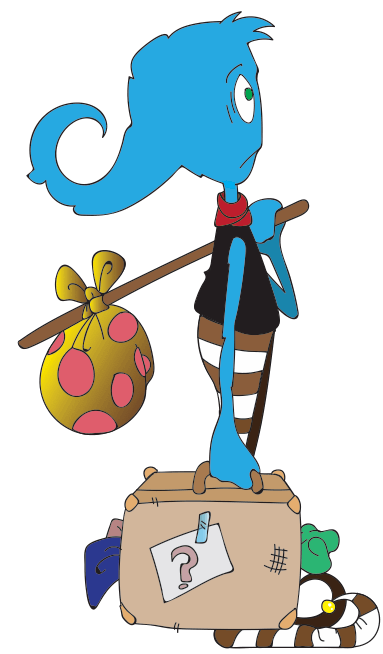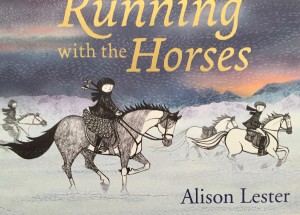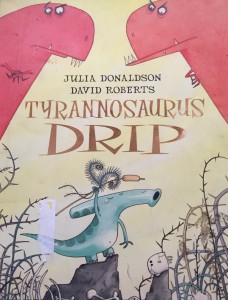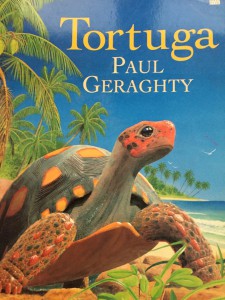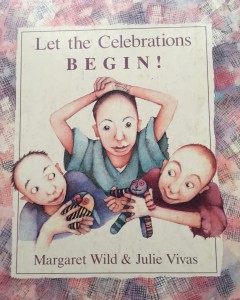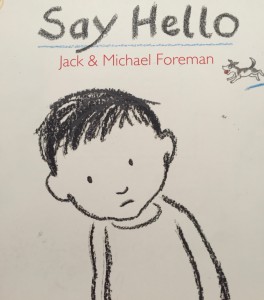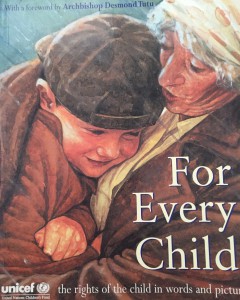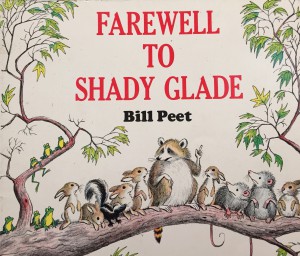Teaching about Migration and Immigration
Often when I pick books to go with a unit, I find it hard to find age appropriate books that have content that fit exactly with a theme or topic. When faced with this dilemma, I return to the concepts that are driving the unit and find books that fit with that theme. I also look for books that will bring an idea close to home, a book whose text can be used as a jumping off point. Moving readers from a close experience to exploring it as a wider idea
Recently I was fortunate enough to work in a classroom, where the class were investigating migration and immigration. It was hard locating books that dealt with the bigger ideas of the level of agency and choice, evacuation, even the ideas of cultural isolation. So I came home and raided my bookshelves to see what I could discover.
Here are the books I linked to the big ideas of migration. Enjoy. Some of the attitudes and attributes link with the IB programme, others are new or broader ideas that I have encountered in different teaching frameworks.
The Way Back Home By Oliver Jeffers (Print/ Picture book)
A simple way to introduce ideas about travel and how it can be both exciting and frightening. Exploring ideas about communication barriers and problem solving. The book can also be used to discuss when people do and don’t have the choice about returning home.
Attribute: Communicator Attitude: Curious
Skill: Problem Solving and communicating
Knowledge: Different forms of communications; Not everyone is the same; Adventures can be scary sometimes
Understanding: Understanding difference; Change involves risks and challenges and possibilities
Running with the horses By Alison Lester (Print Novelette Picture book)
A picture book for older readers. It deals with a young girl and her father fleeing a war torn city with some horses and the companionship that develops over the journey. Simply told, but complex in imagery and emotion.
Attribute: Knowledgeable, Caring
Attitude: Appreciation, Commitment
Skill: Making choices,
Knowledge: Refugees have little choice in how and when they travel
Understanding: Companionship and responsibility, Choice and agency
Tyrannosaurus drip By Julia Donaldson Ill. David Roberts (Print Picture book)
Simple text that deals with ideas of not-fitting or belonging. Simple way to introduce ideas of persecution as a reason that may influence someone to migrate.
Attribute: Thinker
Attitude: Empathy, Confidence
Skill: Problem Solving, making informed choices
Knowledge: Knowing about safe and unsafe spaces and relationships, ideas about persecution
Understanding: Difference can result in persecution; Safety can be a choice; People migrate for different reasons
Tortuga By Paul Geraghty (Print Picture book)
A text based on the migration of a tortoise because of climate conditions, and the hardships faced in a new setting.
A simple way of introducing ideas about climate and the need to connect this to migration, introduces the idea of climate change evacuees.
Attribute: Determination
Attitude: Resilience
Skill: Staying safe
Knowledge: Meeting needs, climate changes; forced migration
Understanding: Climate and climate change affect the migration of all living things; Environments meet different needs
Let the celebrations begin By Margaret Wild Ill. Julie Vivas
(Print Picture book)
A powerful picture book about the Concentration camps of WW2. The book is set at the end of this war. It is about remembering and companionship and finding ways to stay strong as a community despite extreme hardship, forced migration and persecution. A powerful and thoughtful text that deals with complex situations without adding the weight of the world onto the reader’s shoulders.
Attribute: Caring, Determination and Balance
Attitude: resilience, empathy, integrity
Skill: Creating and making do with what you have
Knowledge: Concentration camps, WW2, persecution
Understanding: Community can be powerful, Remembering can keep us connected to action
Say Hello By Jack Foreman Ill. Michael Foreman (Print Picture book)
A picture book about acceptance and inclusion. It is told from the perspective of two characters and what it feels like to be welcomed. A simple way to begin explorations of how a migrant or refugee might feel in a new place. Can open discussions about acts of inclusion.
Attribute: Communicator, Principled
Attitude: Cooperation, empathy
Skill: Communication
Knowledge: How to join in, how to include,
Understanding: Inclusion is a choice and an action; Communities are based on acts of inclusion
My Two Blankets By Irena Kobold Ill. Freya Blackwood (Print Picture book)
The story is told from the perspective of a young African Muslim girl. She shares why her family moved and what it feels like. The images provide deeper insight than the simple text. The character talks about her remembering of traditions and artifacts and then finds a way to connect with a new girl her own age. The girls discover and share things that they have in common and that are different. Slowly the new ideas merge with the main character’s traditions and she finds a way of holding onto her identity from the past and emerging identity in this new space. Exploring ideas of refugees, not migrants by choice.
Attribute: Communicator, knowledgeable, reflective
Attitude: Creativity, Integrity, empathy
Skill: Moving and dealing with change; finding ways to communicate, remembering
Knowledge: Knowing about one’s culture, valuing one’s culture,
Understanding: Identity and culture are connected, Change in culture can lead to change in identity, Staying connected with the past in ways that inform and enrich the future
A child’s garden By Michael Foreman (Print Picture book)
A wonderful text for introducing the complexities of war on communities. It explores idea about division and forced separation. While the character does not migrate or become a refugee, it is a good text for introducing why some families are forced to make that choice. It is also about acts of agency in desperate situations.
Attribute: Thinker, open-minded
Attitude: Commitment, curiosity, appreciation
Skill: gardening, meeting needs, valuing beauty
Knowledge: Daily needs, life in a war torn space
Understanding: Acts of agency can lead to change. Change can begin with small acts. Prejudice and power are connected,
For Every Child – The rights of the child in words and pictures (Print Picture book)
An introduction to the rights of the child by a variety of artists. It is an interesting text to use to compare what the legal differences/ rights that migrants, refuges or asylum seekers have under international law.
How does migration affect children, how are their rights protected?
Attribute: Knowledgeable, thinker
Attitude: Empathy, commitment
Skill: informed choices
Knowledge: The rights of the child in the UN charter for human rights. The legal difference and entitlements for different migrating groups (refugee, migrant, asylum seeker)
Understanding: International law exists, but is not always enforced, law is a social construct acted upon by agreeing parties; Children are recognized as group under international law
Farewell to Shady Glade By Bill Peet (Print Picture book)
A story about a group of animals that get pushed off their land by development, and the changes and problems they face when trying to flee, relocate and resettle.
A simple way to introduce the idea of being a refugee. It can also be used to bring forward that humans are not the only living things affected by power, choice and change, thus forcing migration.
Attribute: Thinker
Attitude: Commitment, resilience, ability to adapt, perseverance
Skill: Adapting to change
Knowledge: Habitats meet the needs of living things; refugees are living things forced to flee for safety
Understanding: Living things adapt to change, Not all change is by choice, Safety is a key aspect of community, refugees have limited choices
Refugees By David Miller (Print Picture book)
This is an interesting take on the notion of refugees. The story follows the path of 2 ducks forced from their habitat by development. As they are forced to move, they become refugees and undergo many of the same experiences of terror, adaption, fear and forced relocation of human refugees. A simple yet powerful way of exploring the ideas that choice and migration are connected to who holds the power.
Attribute: Thinker
Attitude: Commitment, resilience, ability to adapt, perseverance
Skill: Adapting to change
Knowledge: Habitats meet the needs of living things; refugees are living things forced to flee for safety
Understanding: Power and Choice influence migration choices
Our House By Michael Rosen (Print Picture book)
It is often easy to sit and speculate how people should welcome and include refugees and migrants, but what if it was happening in your back yard? Would you let refugees and migrants into your home?
The book ‘This is our house’ deals with a group of kids fighting over a cubby. It is a great way to introduce the notion of “would I share my house with others from a different background, religion, belief system” and “If I did what might the consequences be for everyone?” The text can be used to open up discussions about the complexities of sharing limited spaces and resources or making different belief systems work in the same space. The book is a jumping off point for bigger discussions.
Attribute: Balance
Attitude: Empathy
Skill: making choices,
Knowledge: need and wants, Sharing spaces and resources,
Understanding: Choices are different in reality than in a hypothetical situation, resources are limited, refugees and migrants need space in the new lands they live in, people from different backgrounds don’t always share the same ideas
Mirror By Jeannie Baker (Print Picture book)
Many children who have not travelled, or have travelled in closeted ways may not understand the complexities and diversity in cultures and the differences in daily lived lives. In order to support readers understanding that immigrants, refugees and asylum seekers are coming from very different places and have very different beliefs, traditions, lifestyles, etc., this book can be used to discuss and begin exploring how life might change and what impact these changes might have on identity, feeling safe, belonging?
Attribute: Knowledgeable, inquirer, open-minded
Attitude: Curiosity, appreciation, empathy
Skill: Recognizing needs and differences, being respectful, developing awareness
Knowledge: Cultural traditions, Similarities and differences in daily lives;
Understanding: Culture is connected to identity, Migrants’ choices are impacted on by outside powers and forces, People are different everywhere in the world, People share basic needs, but express themselves very differently; Migration can impact on identity, change and movement will impact in daily life routines and traditions and identity
Meerkat mail By Emily Gravett (Print Picture book)
This is another great book for comparing the difference in daily lives and routines. A meerkat chooses to travel and experience the lives of many other meerkats in new countries. In travelling the main character comes to realize that there are reasons why he feels at home in his place.
In order to support readers understanding that immigrants, refugees and asylum seekers are coming from very different places and have very different beliefs, traditions, lifestyles, etc., this book can be used to discuss why things are different in different places and what might it feel like to have to move to somewhere foreign. Would the amount of choice one had in a move, impact on the way one could adapt or feel when in the new space? How might these introduced changes impact on the current community?
Attribute: Knowledgeable, inquirer, open-minded
Attitude: Curiosity, appreciation, empathy
Skill: Recognizing needs and differences, being respectful, developing awareness
Knowledge: Cultural traditions, Similarities and differences in daily lives;
Understanding: Culture is connected to identity, Migrant’s choices are impacted on by outside powers and forces, People share basic needs, but express themselves very differently; Migration can impact on identity, change and movement will impact in daily life routines and traditions and identity
